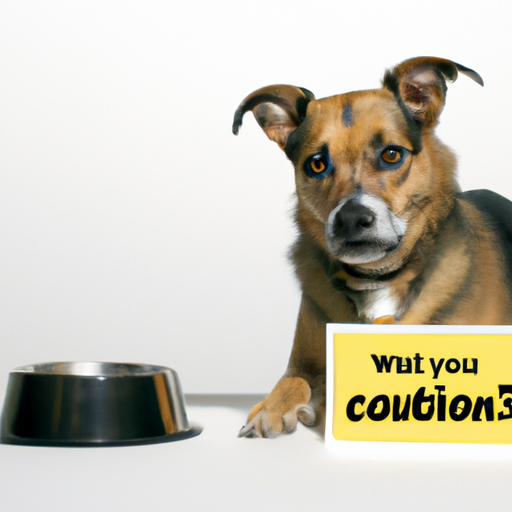As a caregiver, you’re likely familiar with the many behaviors and quirks of your canine companion. But what happens when your dog’s behavior around food becomes a cause for concern? Food aggression is a behavioral issue that can manifest in dogs, causing them to become defensive and potentially aggressive when eating or around food sources. This article aims to provide a comprehensive understanding of food aggression in dogs, its causes, signs, prevention, and management strategies.
Table of Contents
- Defining Food Aggression
- Causes of Food Aggression in Dogs
- Signs of Food Aggression
- Managing and Preventing Food Aggression
- Professional Help and Resources
- Frequently Asked Questions
Key Takeaways
- Food aggression is a form of resource guarding where a dog becomes defensive over food.
- It can be caused by various factors such as competition, past trauma, or a lack of socialization.
- Signs include growling, snarling, snapping, or biting when approached during meal times.
- Food aggression can be managed and prevented through conditioning exercises and professional help.
- It’s crucial to address food aggression promptly to ensure the safety of all household members.
Defining Food Aggression
Food aggression is a form of resource guarding where a dog perceives a threat to their food source and reacts defensively. This behavior may range from mild uneasiness to severe aggression, potentially leading to a dog biting or snapping at perceived threats.
Causes of Food Aggression in Dogs
Food aggression in dogs can arise due to several reasons:
- Competition: In multi-dog households, competition for resources like food can trigger aggressive behavior.
- Past Trauma: Rescue dogs or those with a history of neglect or abuse may develop food aggression as a survival mechanism.
- Lack of Socialization: Dogs not exposed to different experiences and situations during their formative months may exhibit food aggression.
Signs of Food Aggression
Identifying food aggression early is crucial for managing it effectively. Below are some signs that your dog might be displaying food aggression:
- Growling when someone approaches their food
- Snarling or showing teeth during meal times
- Snapping or biting when someone tries to touch their food
Managing and Preventing Food Aggression
Addressing food aggression often involves conditioning exercises and changes in feeding practices:
- Desensitization and Counterconditioning: This involves gradually getting the dog used to the presence of others during meal times, pairing this with positive experiences.
- Training Commands: Teaching commands like “leave it” or “drop it” can be beneficial.
- Feed Separately: In multi-dog households, feed the dogs separately to avoid competition.
If these strategies don’t work, you may need to seek professional help. A certified dog behaviorist or trainer can provide personalized strategies and techniques to address this issue. More on this topic can be found at American Kennel Club.
Professional Help and Resources
Sometimes, food aggression can be severe enough that professional intervention is necessary. If you need help, consider reaching out to a professional dog behaviorist. The Certification Council for Professional Dog Trainers can be a good starting point.
For more insightful articles on dog behavior, consider visiting One Top Dog. Some relevant articles include Understanding Your Dog’s Behavior, Handling Aggression in Dogs, and Socializing Your Dog.
Frequently Asked Questions
-
What is food aggression in dogs?
Food aggression is a behavioral issue where a dog becomes defensive and potentially aggressive when eating or around food sources. -
What causes food aggression in dogs?
Food aggression can be caused by competition, past trauma, or a lack of socialization. -
How can I manage my dog’s food aggression?
Food aggression can be managed through desensitization and counterconditioning exercises, training commands, and feeding dogs separately in multi-dog households. -
When should I seek professional help for my dog’s food aggression?
If your dog’s food aggression is severe or if the strategies you’re using aren’t working, it may be time to seek help from a professional dog behaviorist.
Understanding and managing food aggression in dogs is crucial, not just for the dog’s wellbeing but also for the safety and harmony of your home. Remember, patience, consistency, and professional guidance are key in handling this behavior effectively.



